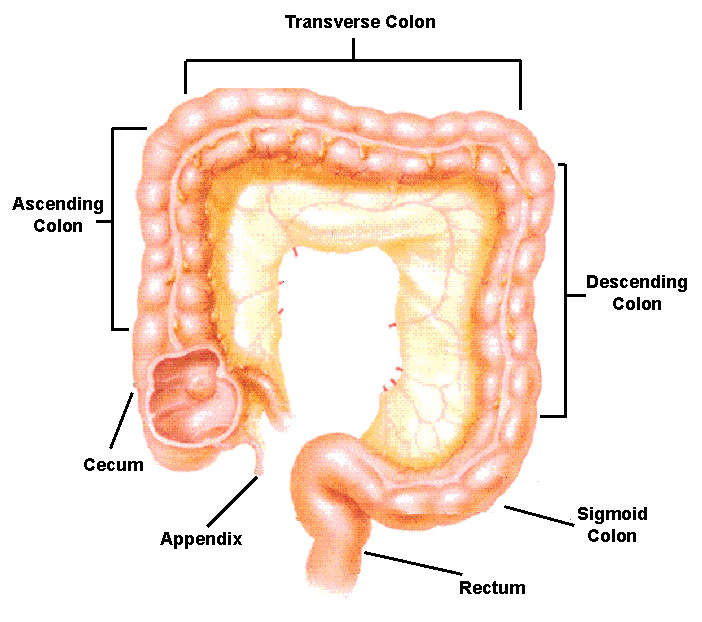Introduction
-
The large intestine is the last part of the digestive tube and the location of the terminal phases of digestion. It has mainly got two main functions:
-
Recovery of water and electrolytes from ingesta : By the time ingesta reaches the terminal ileum, roughly 90% of its water has been absorbed, but considerable water and electrolytes like sodium and chloride remain and must be recovered by absorption in the large gut.
-
Formation and storage of feces: As ingesta is moved through the large intestine, it is dehydrated, mixed with bacteria and mucus, and formed into feces
-
-
Within the large intestine, three major segments are recognized:
-
the cecum - a blind-ended pouch that carries a short extension called the vermiform appendix.
- the colon constitutes the majority of the length of the large intestine and is subclassified into ascending, transverse and descending segments. The rectum is the short, terminal segment of the digestive tube, continuous with the anal canal.
-
- Main difference between the mucosa of the small intestine and the large intestine - mucosa of the large intestine is devoid of villi.
- It has numerous crypts which extend deeply and open onto a flat lumenal surface.
- Mucus-secreting goblet cells are also much more abundant in the colonic epithelium than in the small gut.
Structure of the Colon
-
bundles of the outer longitudinal muscle are grouped into 3 thick bands- taeniae of the colon
-
inner circular muscle coat
-
taniae are shorter than underlying circular muscle coat giving rise to haustra
